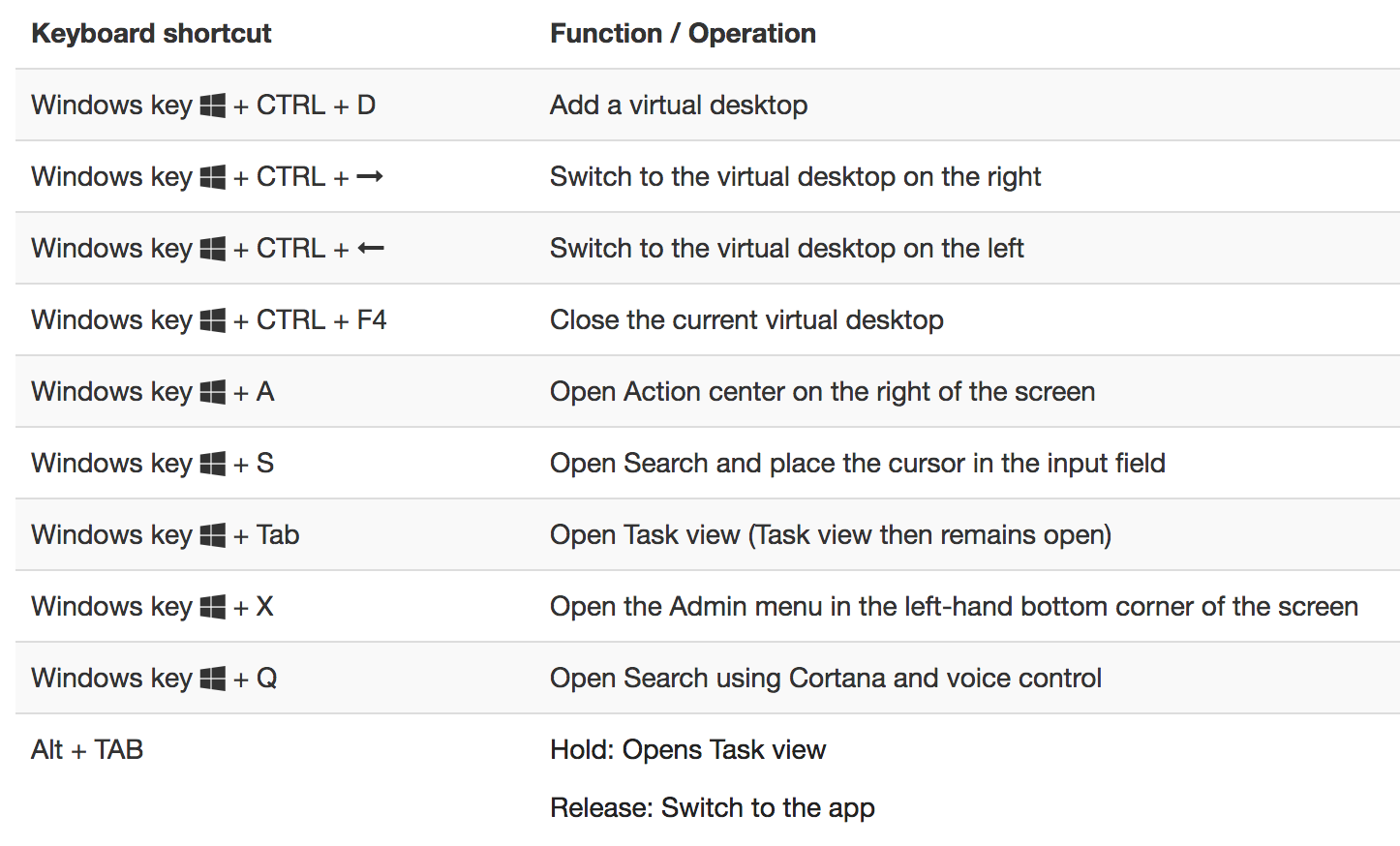

- #Windows keyboard shortcuts turn off update#
- #Windows keyboard shortcuts turn off registration#
- #Windows keyboard shortcuts turn off windows 10#
#Windows keyboard shortcuts turn off registration#
The Office app does not appear to be responsible for registration of the shortcuts. This is likely due to the fact that it activates when a modifier key is released, not when it is pressed. However, the main Office shortcut ( Ctrl+ Alt+ Shift+ Win) does not behave this way, and cannot be disabled by simply defining a hotkey that does nothing. This can also be observed with the more traditional shortcuts, such as Win+ E, but not Win+ L, which is likely implemented at a lower level for security reasons. This can be explained by the fact that RegisterHotkey will fail if the hotkey has already been registered by any process. If Explorer is restarted after the script has registered ^+!#d:: with RegisterHotkey, the built-in hotkey does not work even if AutoHotkey is terminated, until Explorer is restarted.

If Explorer is running when the script starts, the hotkey ^!+#d:: cannot be registered, so AutoHotkey falls back to using the keyboard hook - ListHotkeys shows the "k-hook" method.If Explorer is not running when the script starts, the hotkey ^!+#d:: is typically able to be registered by AutoHotkey - ListHotkeys shows the "reg" method.Alternatively, Explorer can be terminated via Task Manager.
#Windows keyboard shortcuts turn off windows 10#
One can exit Explorer on Windows 10 and earlier by Ctrl+ Shift-right-clicking on the taskbar and selecting "Exit Explorer".It is likely that the letter-key shortcuts are handled in the same manner as all other hotkeys registered with RegisterHotkey that is, they are registered by a program (Explorer in this case), and are deregistered when that program exits or is terminated. Which program snatches the keyboard shortcut? Since the main Office shortcut can be activated by combining the modifier keys in any order, suppressing it requires several hotkeys one for each "suffix" key: #^!Shift::Īccording to my experimentation on Windows 10 build 18362.10014, the following Ctrl+ Alt+ Shift+ Win shortcuts also exist: Word, Teams, Yammer, Outlook/Mail, PowerPoint, LinkedIn, E xcel and One Note. ĭisable Office Shortcut (Ctrl+Alt+Shift+Win) The following script for AutoHotkey v1.x disables Ctrl+ Alt+ Shift+ Win+ D: ^+!#d:: Disable OneDrive Shortcut (Ctrl+Alt+Shift+Win+D) Masking the shortcut manually is just a case of sending a key.

#Windows keyboard shortcuts turn off update#
After the operating system's keyboard shortcut recognizer sees that Win or Alt is used in combination with another key, it avoids activating the menu when the Win or Alt key is released.Ī future update to AutoHotkey might add this masking for ^!+#, but as of v1.1.30.03 it is not done. However, in those cases AutoHotkey automatically "masks" the menu by sending a key ( LCtrl by default, but it can be overridden with #MenuMaskKey). The same generally applies to the Win and Alt keys, which normally activate the Start menu or a window menu. In effect, the operating system's keyboard shortcut recognizer sees only Ctrl+ Alt+ Shift+ Win instead of Ctrl+ Alt+ Shift+ Win+ D, so instead of opening OneDrive, it opens the Office app or website. For example, the hotkey ^!+#d:: would suppress the D key, but only after the four modifier keys have already been passed through to the OS and the active window. One complication in this case is that AutoHotkey does not block the modifier keys, since doing so would interfere with their normal function. AutoHotkey can be used to override most keyboard shortcuts - generally the only exceptions are Ctrl+ Alt+ Del and Win+ L.


 0 kommentar(er)
0 kommentar(er)
